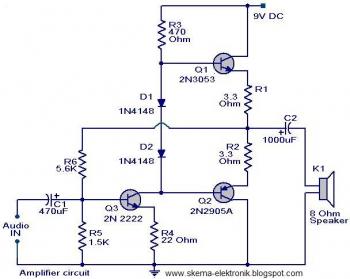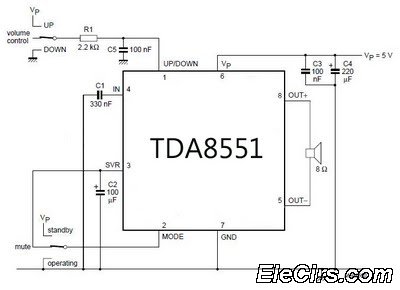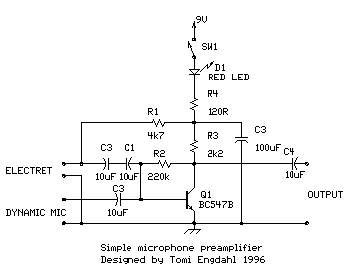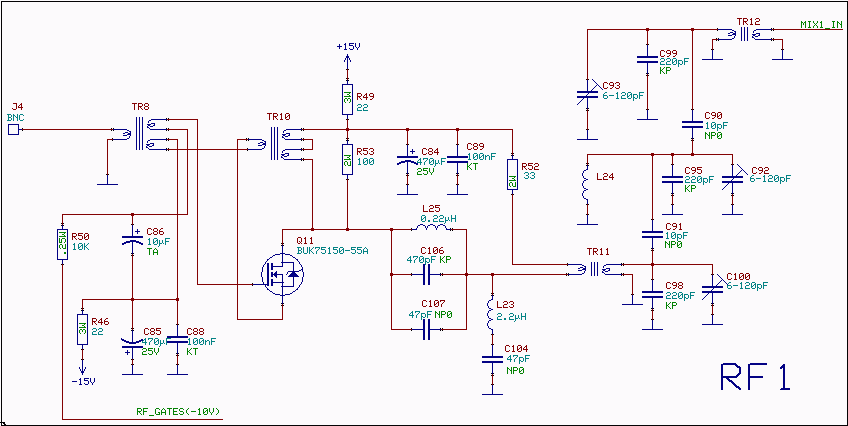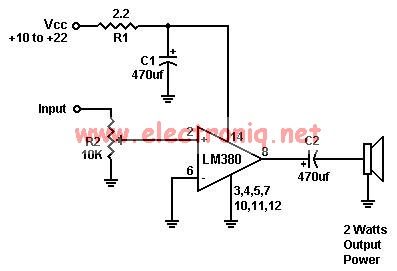
2SC2539 FM RF Amplifier
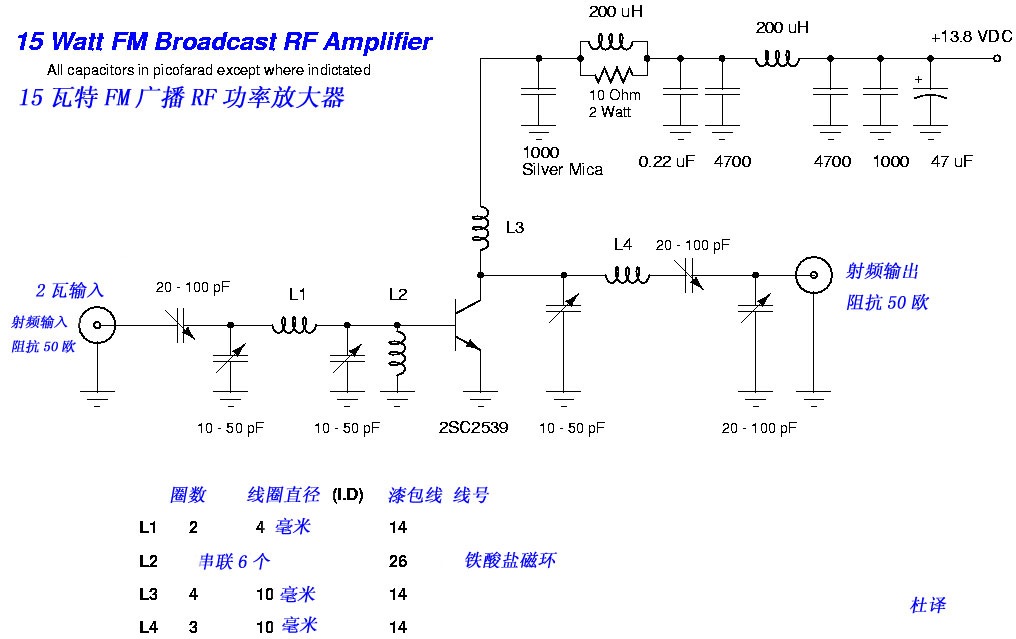
This FM broadcast RF amplifier is constructed using the 2SC2539, which is a silicon NPN epitaxial planar type transistor designed for RF power amplifiers in the VHF band.
The FM broadcast RF amplifier utilizing the 2SC2539 transistor operates effectively within the VHF frequency range, making it suitable for various applications in radio broadcasting. The 2SC2539 is known for its high gain and efficiency, which are critical parameters in RF amplification.
The circuit typically consists of a few key components: the 2SC2539 transistor, biasing resistors, coupling capacitors, and a power supply. The biasing resistors are essential for establishing the correct operating point of the transistor, ensuring it operates in the active region for linear amplification. Coupling capacitors are used to block DC while allowing the RF signal to pass through, maintaining signal integrity.
In addition, an output matching network may be included to optimize the power transfer from the transistor to the antenna, enhancing the overall performance of the amplifier. The design must consider factors such as load impedance and frequency response to achieve the desired output power and signal quality.
Proper heat dissipation measures, such as heat sinks, are also critical in maintaining the reliability of the 2SC2539 during operation, as RF amplifiers can generate significant heat. Overall, the design of this FM broadcast RF amplifier is a balance of component selection, circuit topology, and thermal management to achieve optimal performance in VHF applications.This FM broadcast rf amplifier is built with 2SC2539 which is a silicon NPN epitaxal planar type transistor designed for RF power amplifiers in VHF band mo.. 🔗 External reference
The FM broadcast RF amplifier utilizing the 2SC2539 transistor operates effectively within the VHF frequency range, making it suitable for various applications in radio broadcasting. The 2SC2539 is known for its high gain and efficiency, which are critical parameters in RF amplification.
The circuit typically consists of a few key components: the 2SC2539 transistor, biasing resistors, coupling capacitors, and a power supply. The biasing resistors are essential for establishing the correct operating point of the transistor, ensuring it operates in the active region for linear amplification. Coupling capacitors are used to block DC while allowing the RF signal to pass through, maintaining signal integrity.
In addition, an output matching network may be included to optimize the power transfer from the transistor to the antenna, enhancing the overall performance of the amplifier. The design must consider factors such as load impedance and frequency response to achieve the desired output power and signal quality.
Proper heat dissipation measures, such as heat sinks, are also critical in maintaining the reliability of the 2SC2539 during operation, as RF amplifiers can generate significant heat. Overall, the design of this FM broadcast RF amplifier is a balance of component selection, circuit topology, and thermal management to achieve optimal performance in VHF applications.This FM broadcast rf amplifier is built with 2SC2539 which is a silicon NPN epitaxal planar type transistor designed for RF power amplifiers in VHF band mo.. 🔗 External reference

